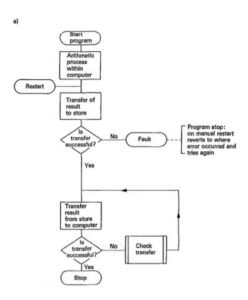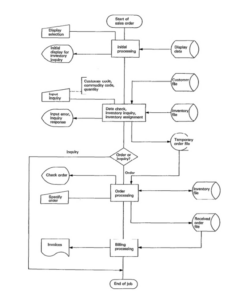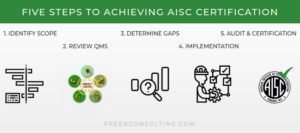Find out more how Freer Consulting can help your business with regulatory compliance and quality programs.
By examining the costs and benefits of implementing process-based integrated management systems, organizations may gain insight into the potential value of merging regulatory compliance with quality programs.
As an example, the food processing industry is regulated by the Food and Drug Administration (FDA) under 21 CFR 117. An international standard in food processing quality is Safe Quality Food (SQF). An organization in this sector may face the dual requirements of 21 CFR 117 and SQF’s quality requirements (SQF Code Edition 9) and choose to integrate their programs to conform with both in a single management system. A cross-reference matrix integrated into a management system shows shared requirements between two standards or regulations and lists requirements that are not shared yet still required from one of the two standards or regulations under consideration.
Regulations are not typically written in a process framework, let alone aligned with a standard. Regulations tend to be written in a policy narrative format which lists requirements, rules and compulsory end-state outcomes. Process-based standards allow an organization the latitude to set its own monitored metrics. International, national, and industry standards differ from regulations in that they are not promulgated by government agencies but instead are a set of technical specifications developed by an international body, a national standards entity, or an industry standards entity. Standards are typically adopted by organizations voluntarily, although some customer requirements stipulate conformance with a specific standard.
Organizations inevitably encounter inter-relationships between regulatory compliance and quality programs. However, these relationships are often reacted to in a haphazard manner instead of integrating the two into a management system. It can be challenging for organizations to coordinate legal and supra-legal requirements.
Government and certified auditors encounter a myriad of information management schemes in stand-alone and integrated management systems, and it is common to find a set of characteristics that constrain organizational effectiveness in the pursuits of quality programs and regulatory compliance.
Here we identify five constraints which adversely affect the optimization of management system implementation:
- Organizations often accept externally generated regulatory compliance targets at face value, while ignoring the wider context and purpose of collecting and reporting data on a given topic. Accepting compliance targets as-is may decrease the chances an organization has to undertake initiatives to explore data collection and reporting that can benefit the organization.
- Organizations may develop policies, procedures, forms and reports that are binary yes/no in format (e.g., was the target met?) which can stymie measurement.
- Organizations may decide to maintain two separate management systems, one for regulatory compliance and the other for their quality program, each of which may become centralized silos of information.
- Organizations may create a narrative (text) structure to carry out an elements-based system. However, dense text is hard to follow, and text-based policies are less likely to be linked to other activities in regular workflows than other graphical devices. Best practices now utilize process flowcharts and process maps. ISO 5807 (1985: 1-2) identifies five types of flowcharts: data flowchart, program flowchart, system flowchart, program network chart, and system resource chart (see Figures 1 and 2 below).
- By default, narrative-based management systems are commonly structured on departmental organizational charts, rather than being based on individual process-ownership. It is often not clear who is responsible for implementation and execution of a specific area. Allocating responsibility and authority at the individual level through process-ownership avoids the wasted effort of re-designing the management system when an organization changes structure and makes it easy to locate the person responsible for a given process.

Figure 1: Program Flowchart, from ISO 5087 Annex B

Figure 2: System Flowchart, from ISO 5087, Annex C
It is wise to outline the pros and cons of changing or improving the structure of a management system. First, identify all legal and supra-legal requirements. Then, an organization’s management system should be categorized into the following types: elements-based or organized using an independent system; composed primarily with narrative, text-based procedures; or process oriented with process flowcharts and maps.
An elements-based system follows the numbering and order of the regulation and/or standard. An independently structured system is based on a generic ordering using language common to the organization.
To characterize the format of procedures, begin by selecting three procedures from separate areas of the management system. Read the procedure and look for one of two common possibilities: narrative sentences organized in statements (narrative management system) or graphical depictions of the steps of an activity (process-based system).
After compiling a table of legal and supra-legal requirements, an organization can next score their findings. If the table contains many requirements and the majority are complicated, then issue a score of High/Complex. Medium/Standard is assigned if the organization is not in a highly regulated sector. A score of Low/Simple is given to companies that are lightly regulated.
To score the overall structure of the management system, assign a label of Elements for systems that follow the sequence and nomenclature of the regulation and/or standard. If the system is based on the organization’s own approach, label it Independent. For procedures, assign a value of Primarily Narrative for management systems where most of the information in the procedures and work instructions is via text. If an organization’s management system includes procedures and work instruction mainly composed of flowcharts and maps, assign a value of Primarily Process.
Organizations with a combined score of High/Complex, Elements, and Primarily Narrative may find value in considering a transition to a process-based management system.
Transition to a process-based approach can be challenging. A shift in mindset is often required for team members new to this system, and the implementation phase can be time consuming.
However, there are three main advantages of adopting a process-based management system:
- Establishes a process baseline.
- Allows less effort to set metrics and measure against a baseline.
- Continual improvement is enhanced through a process approach because an organization has established process benchmarks.
In summary, the case for process-based management system integration is organizational efficiency, elimination of redundancy, along with compliance improvement through enhanced knowledge and measurement brought about by feedback from quality initiatives.
learn more about how Freer can help your business with Environmental Compliance Consultants – Freer Consulting







